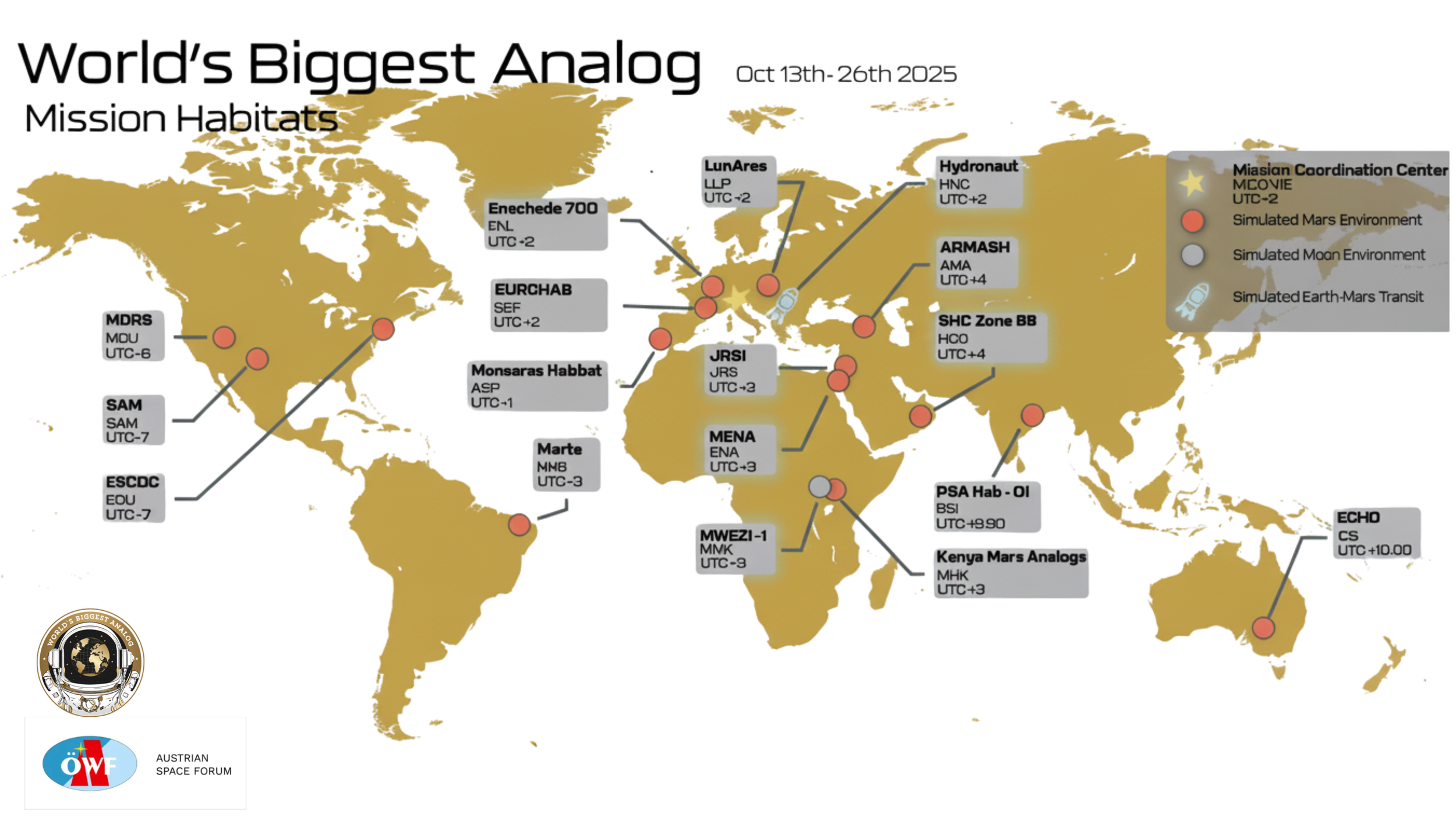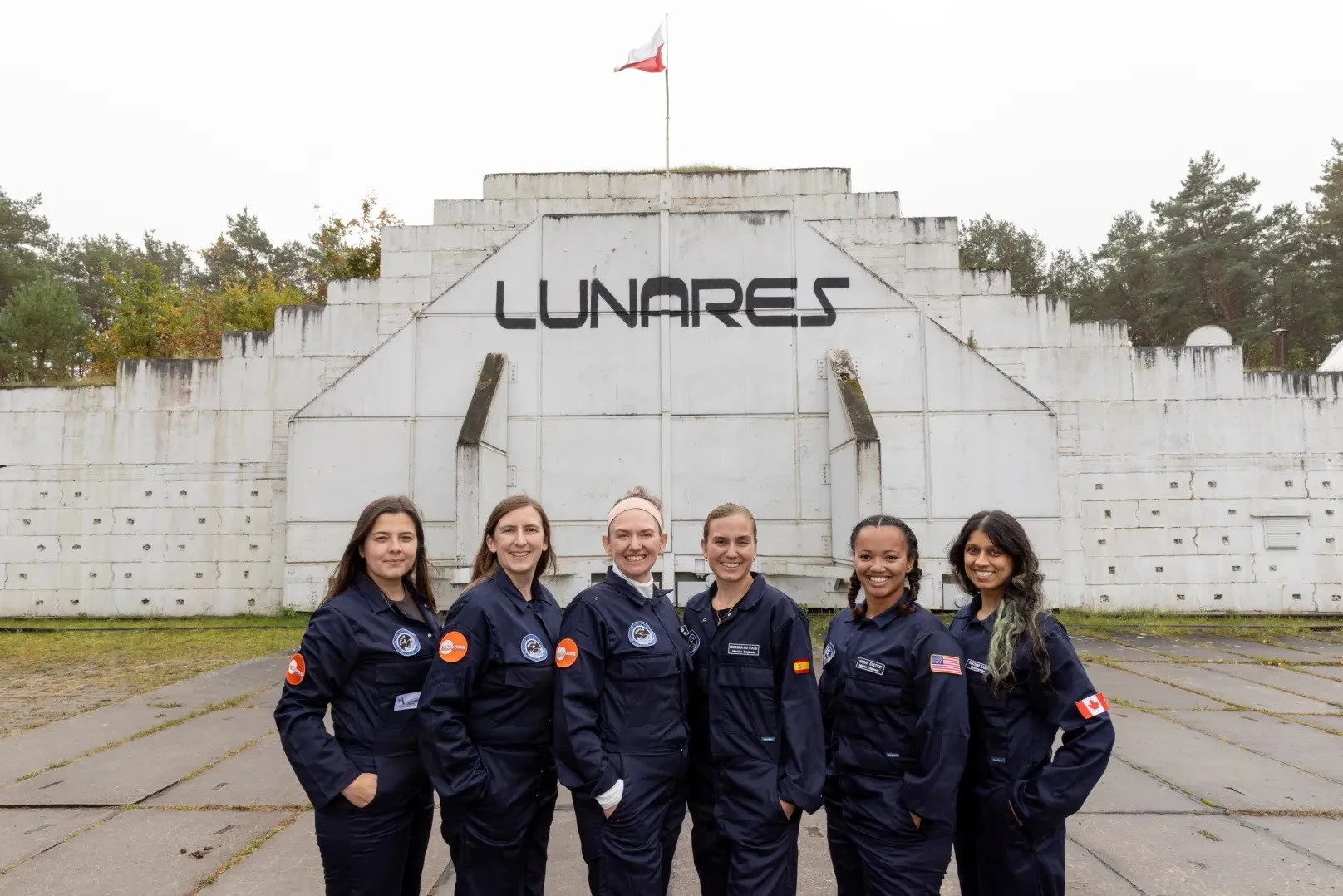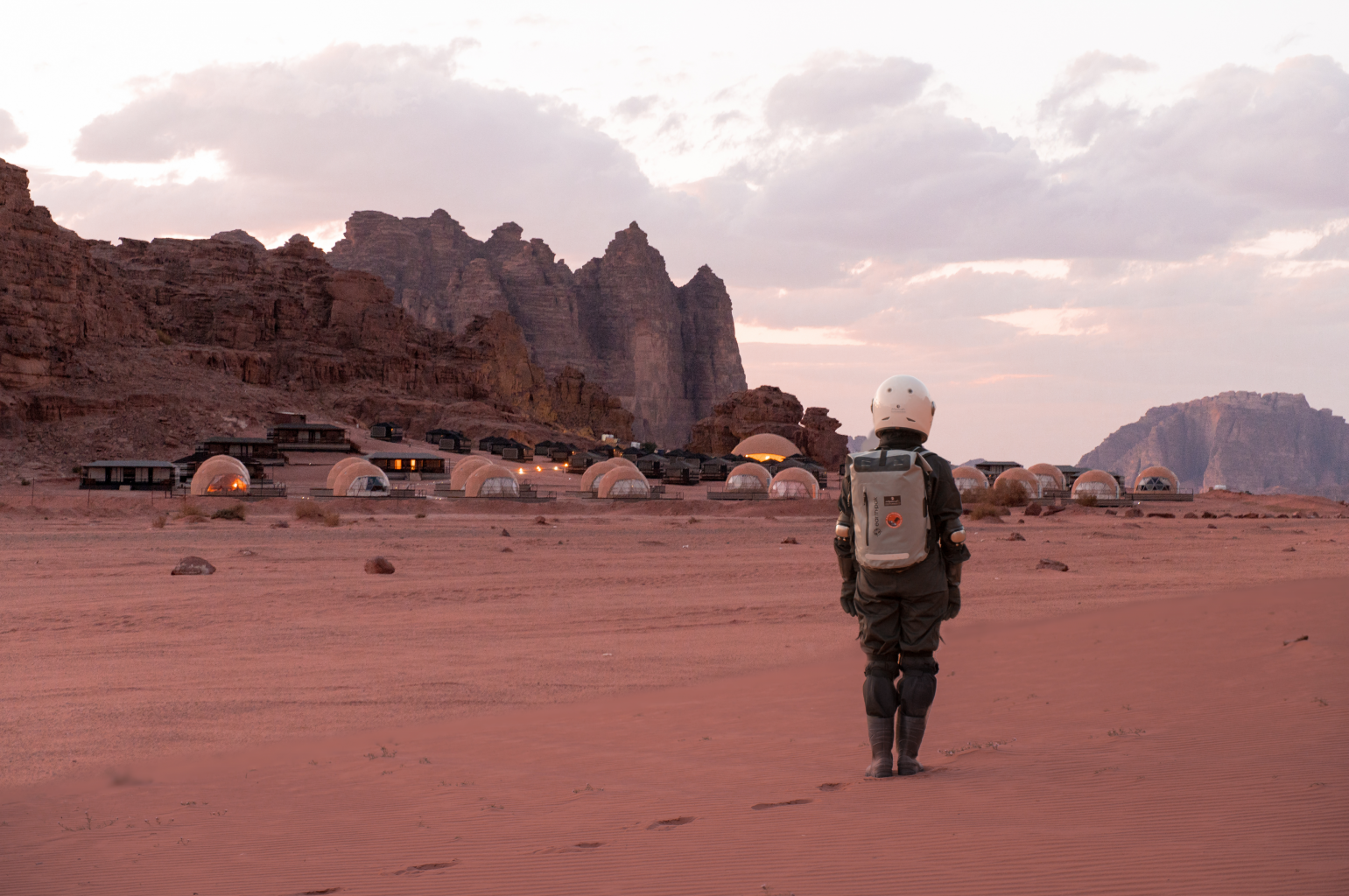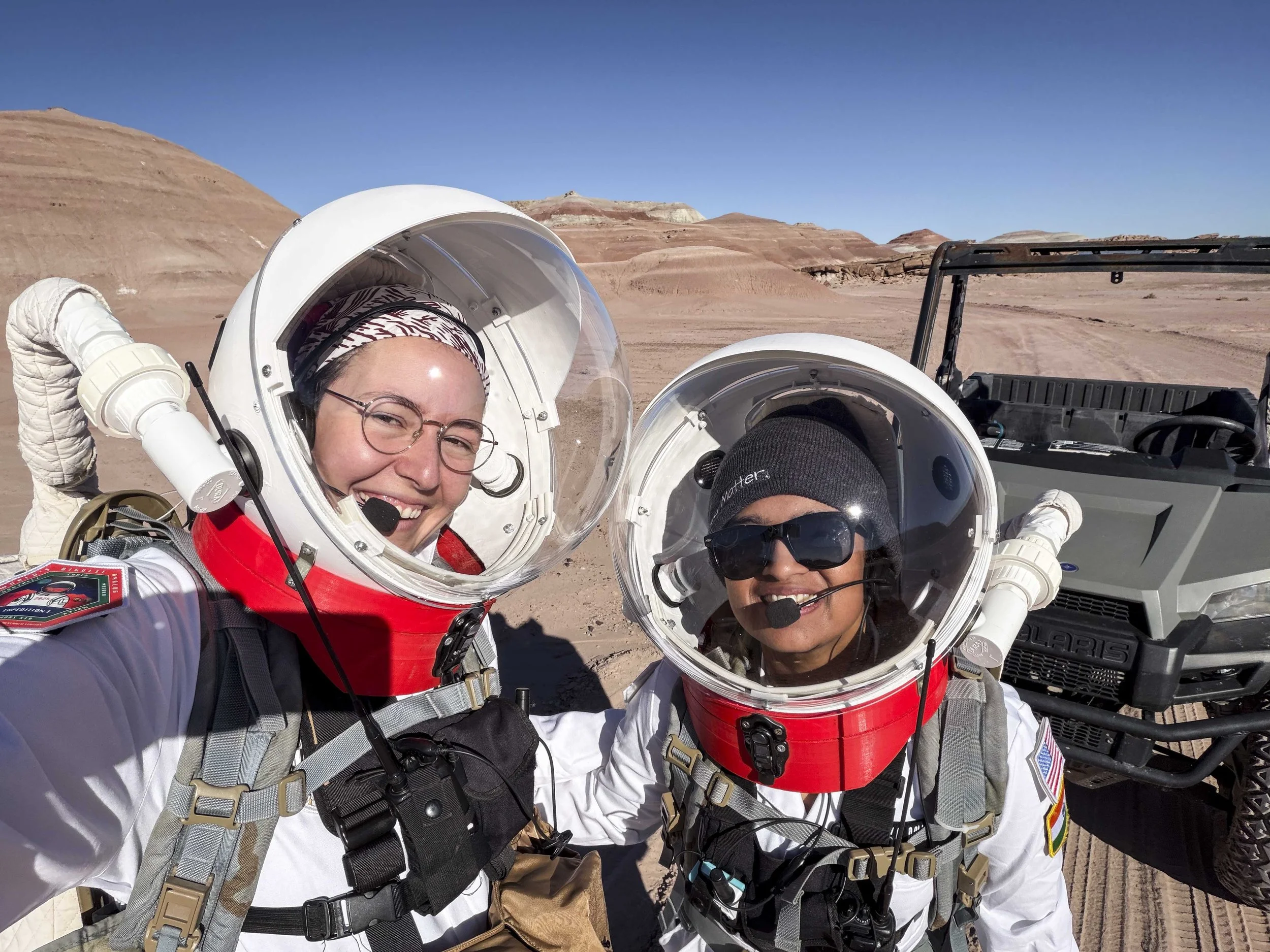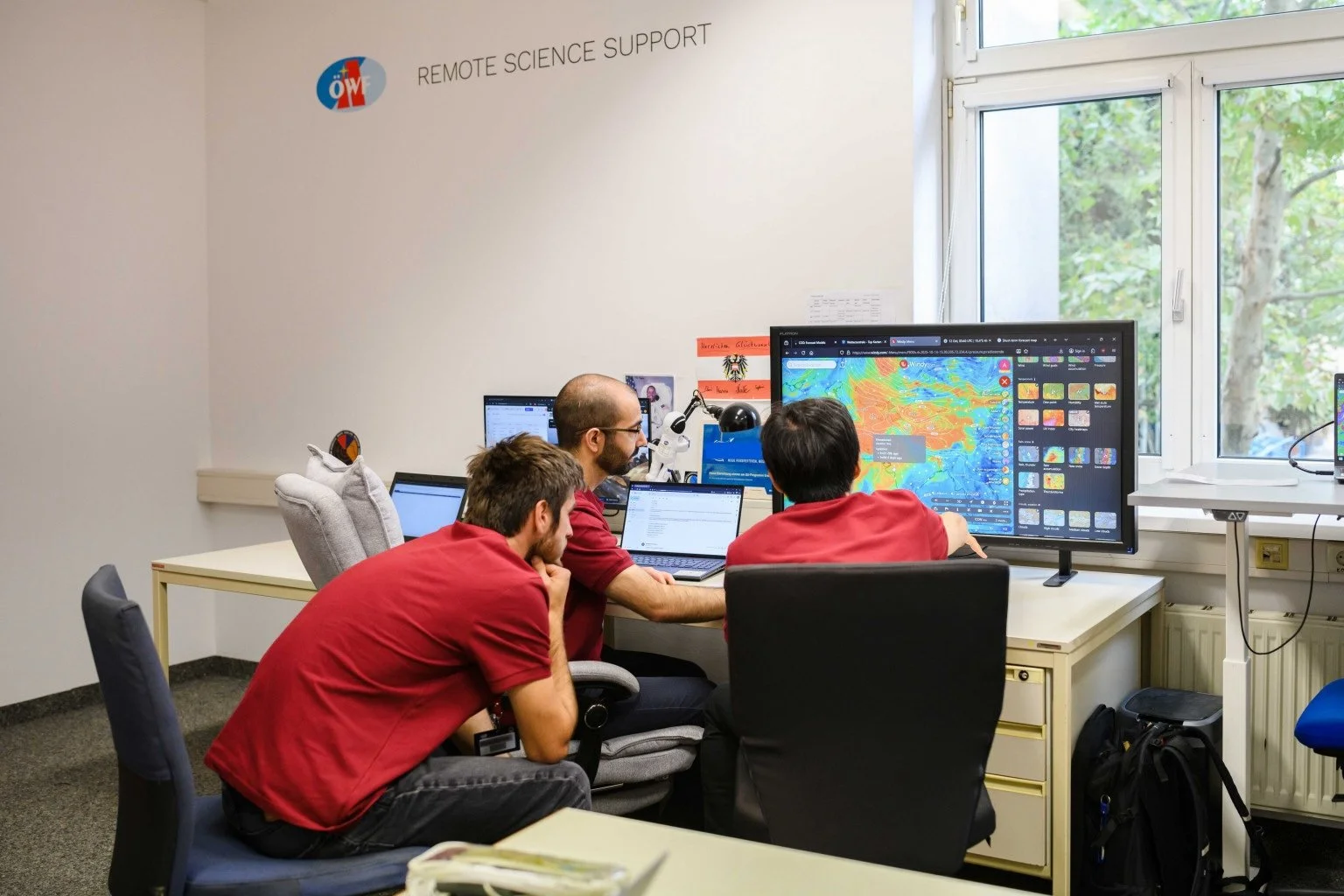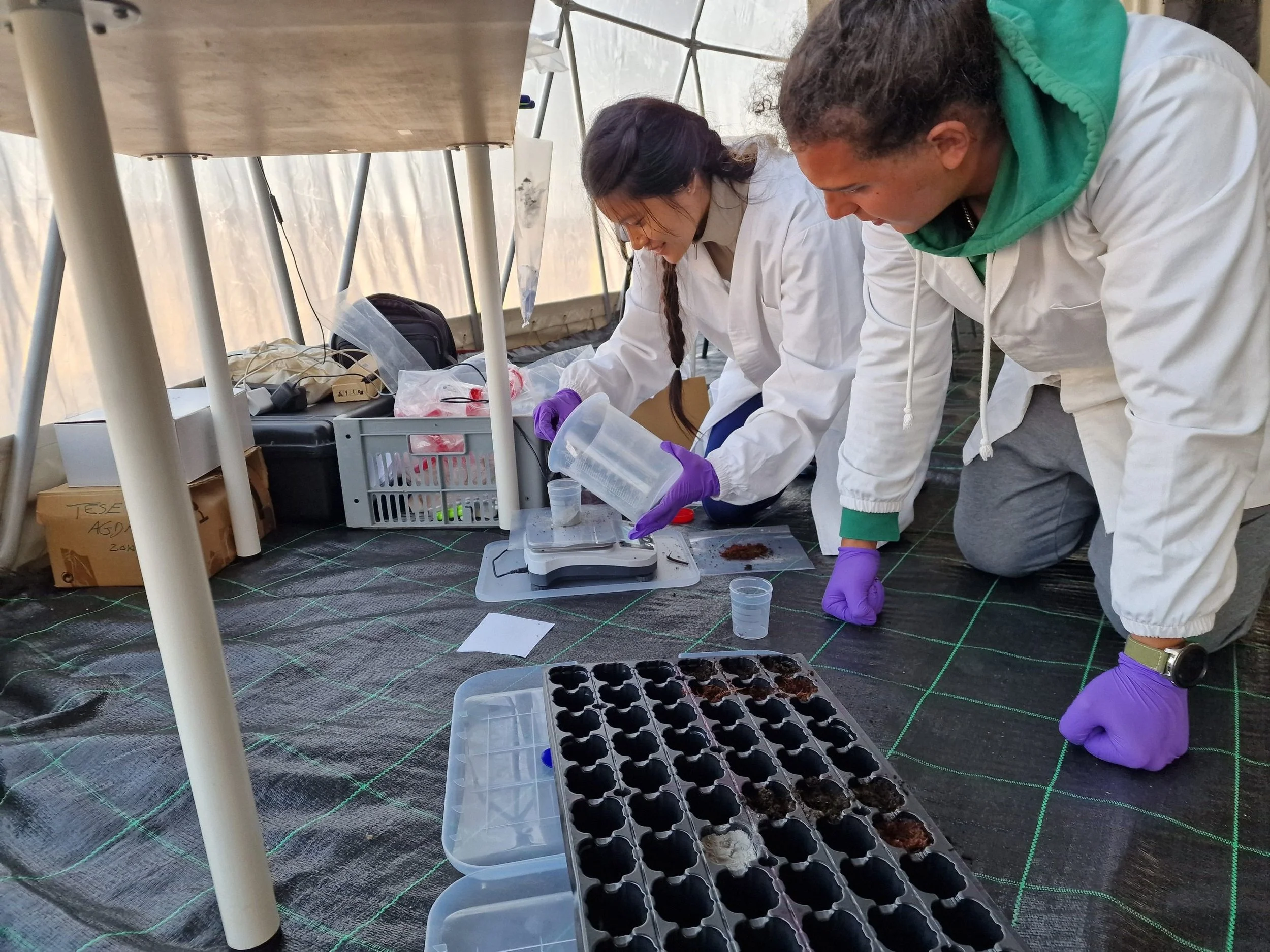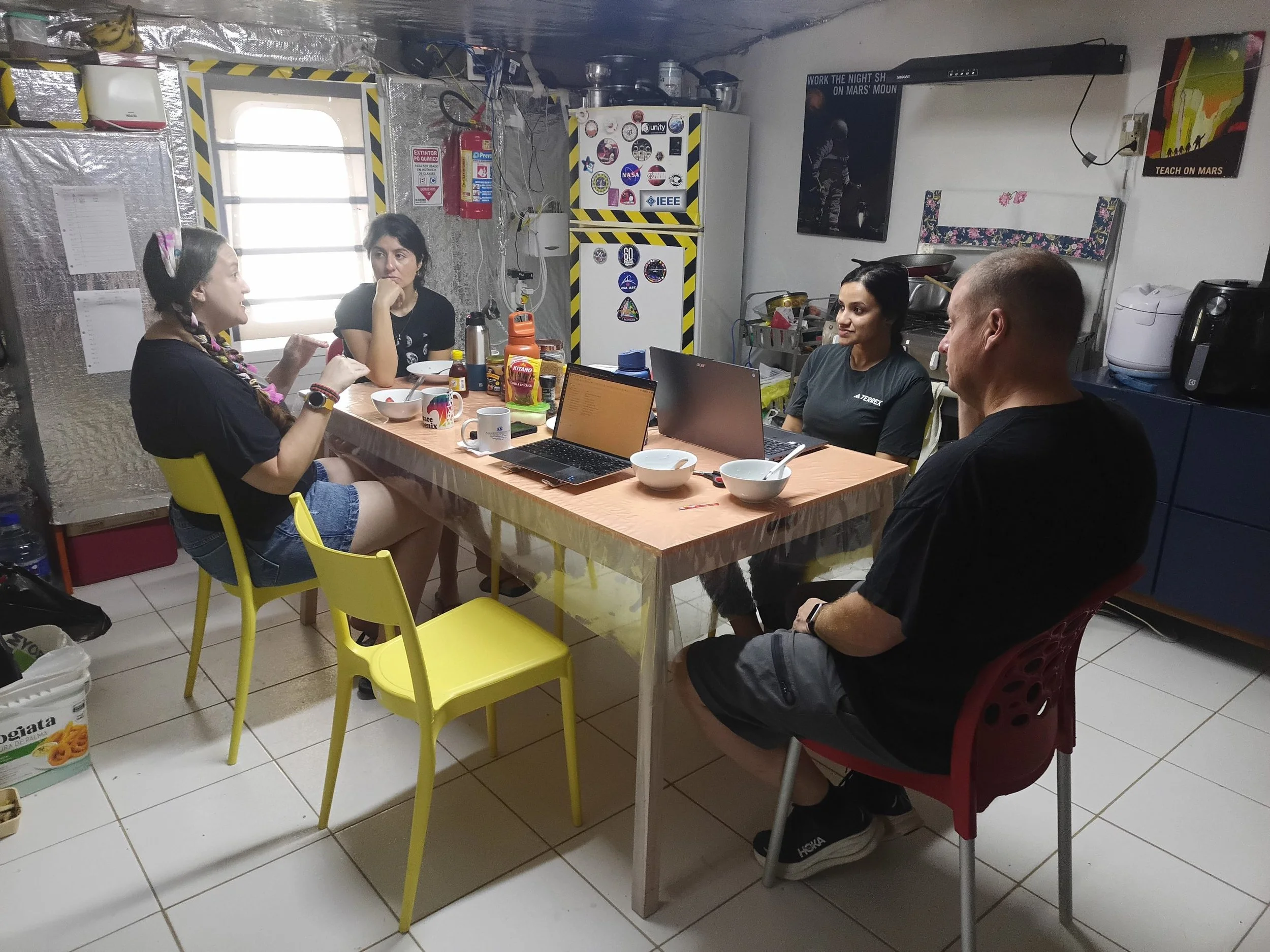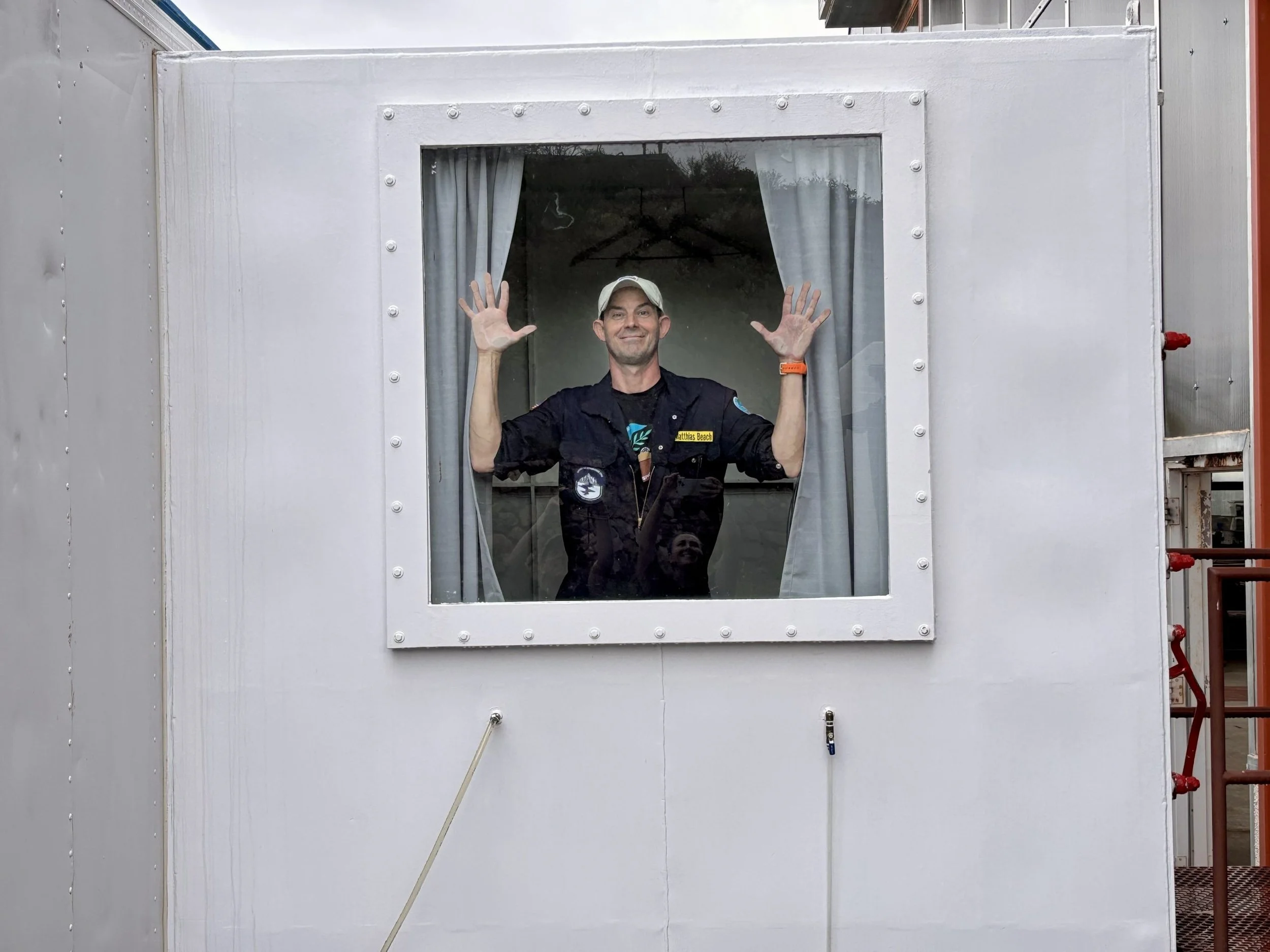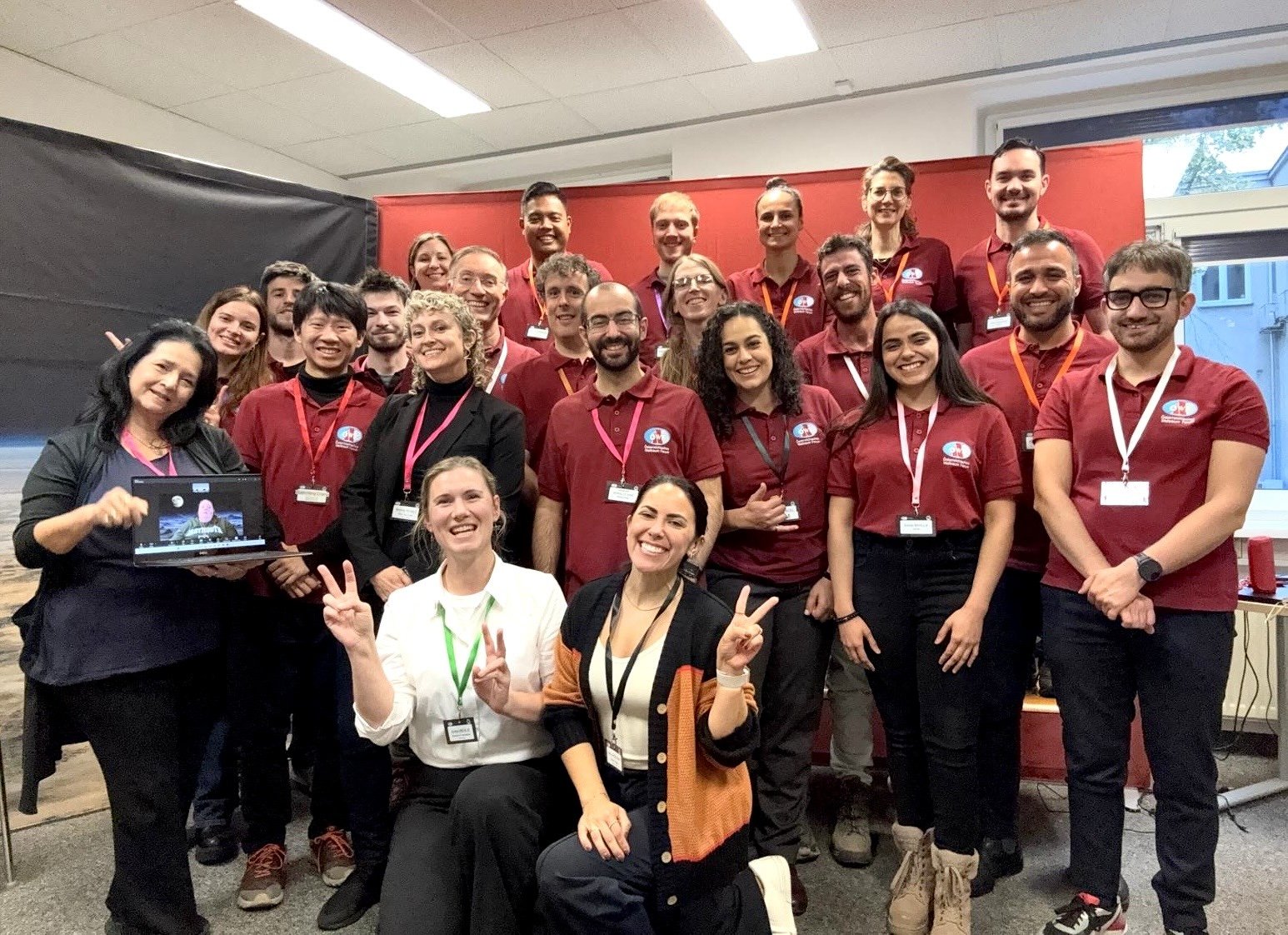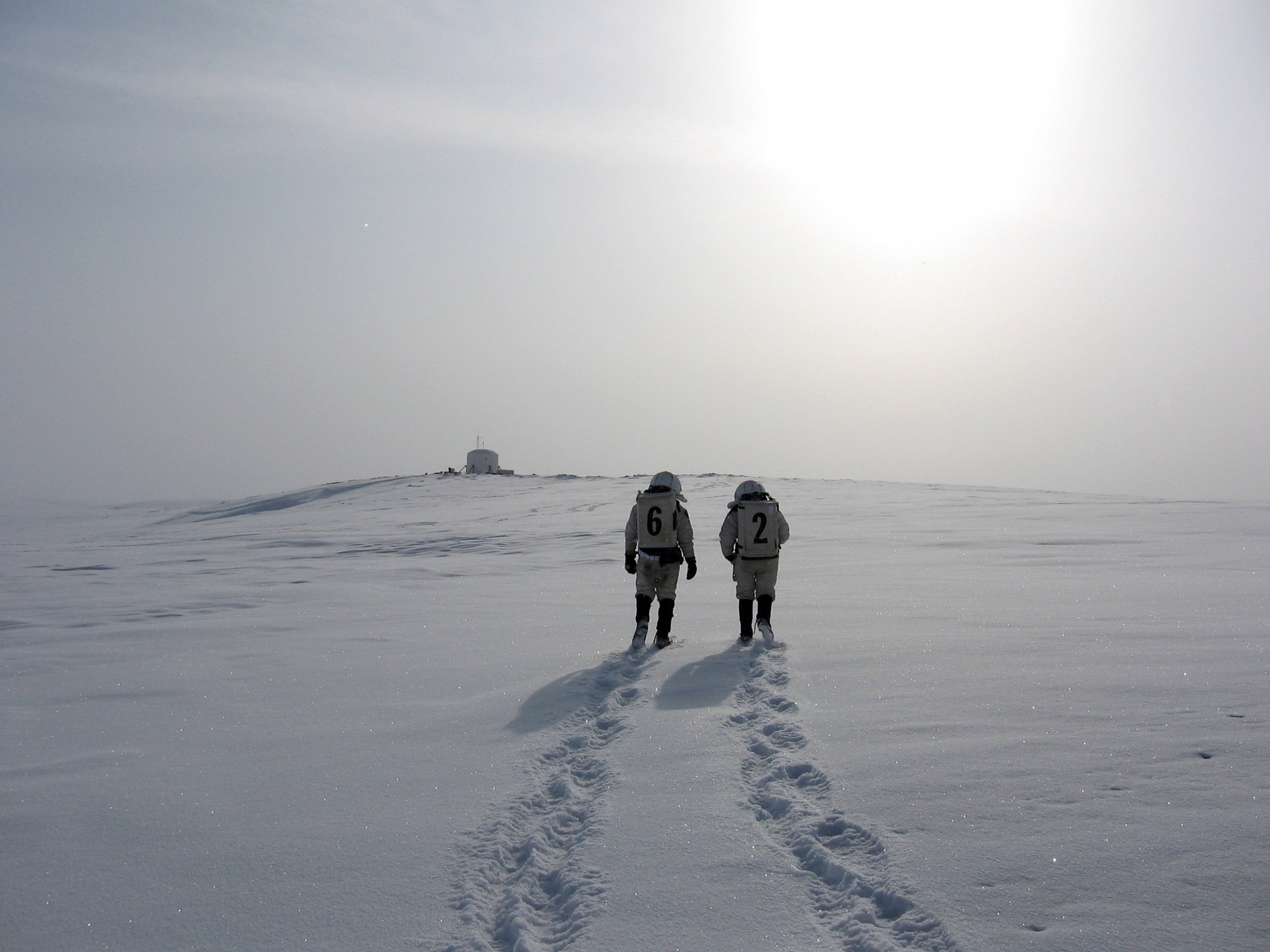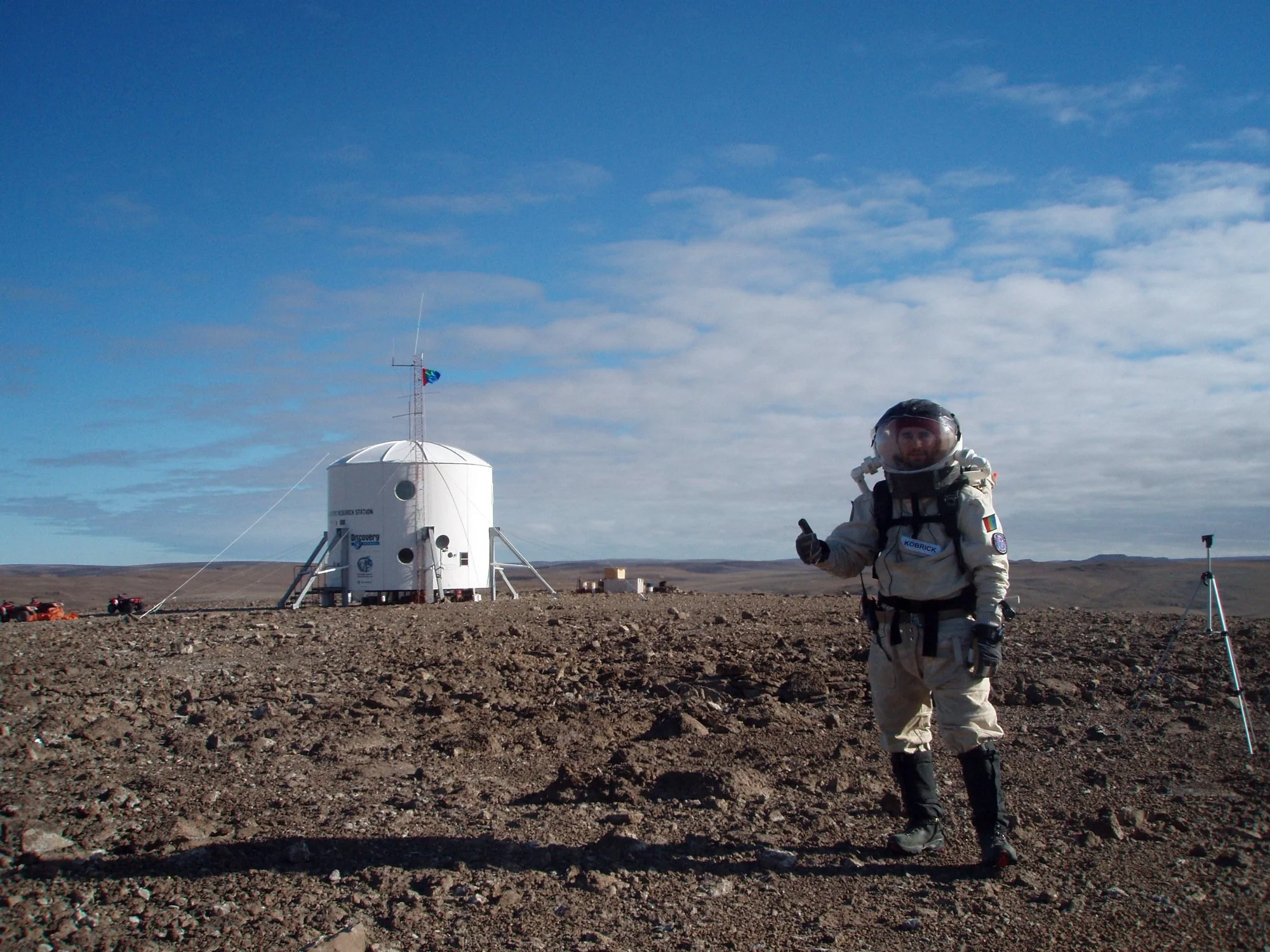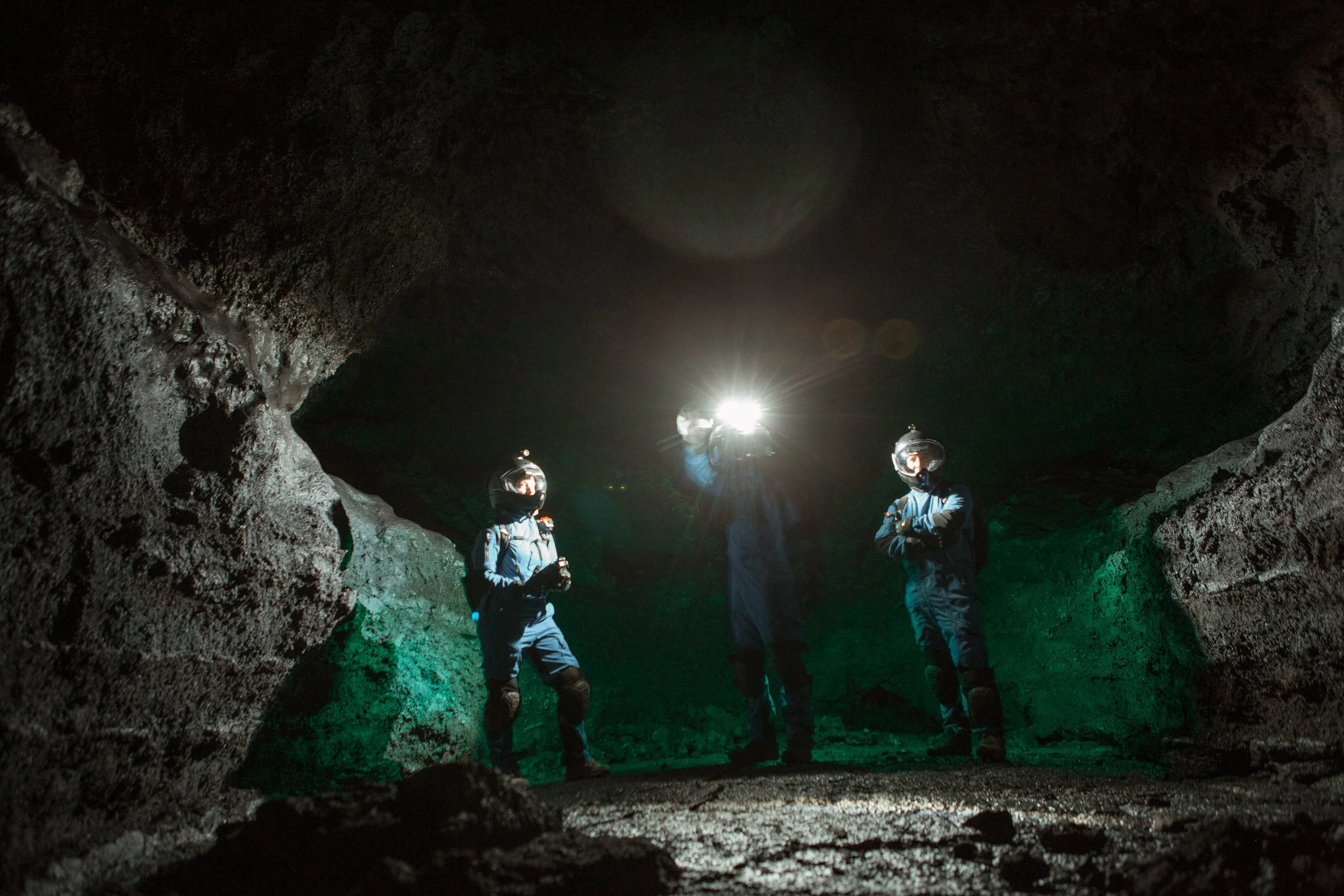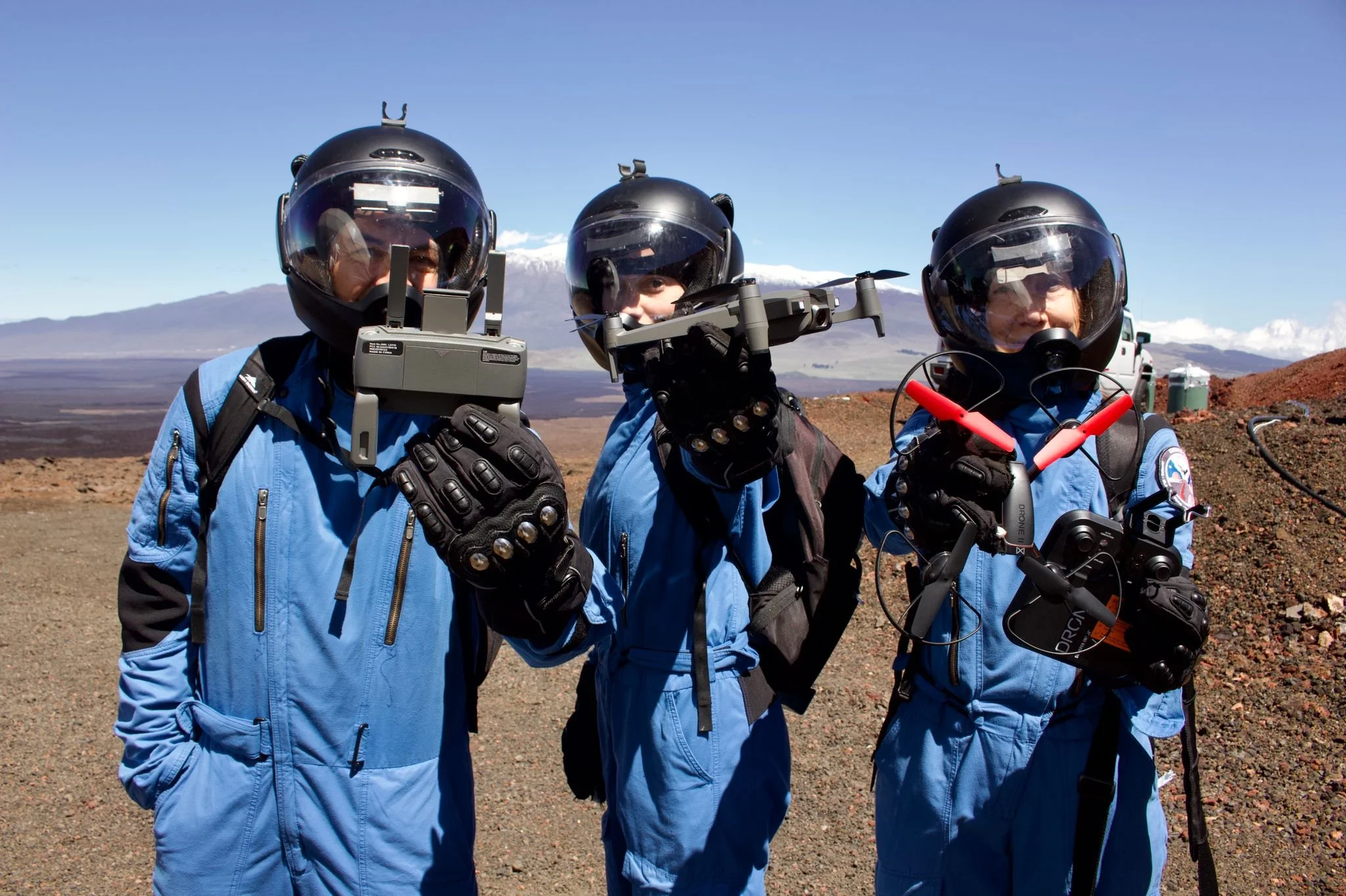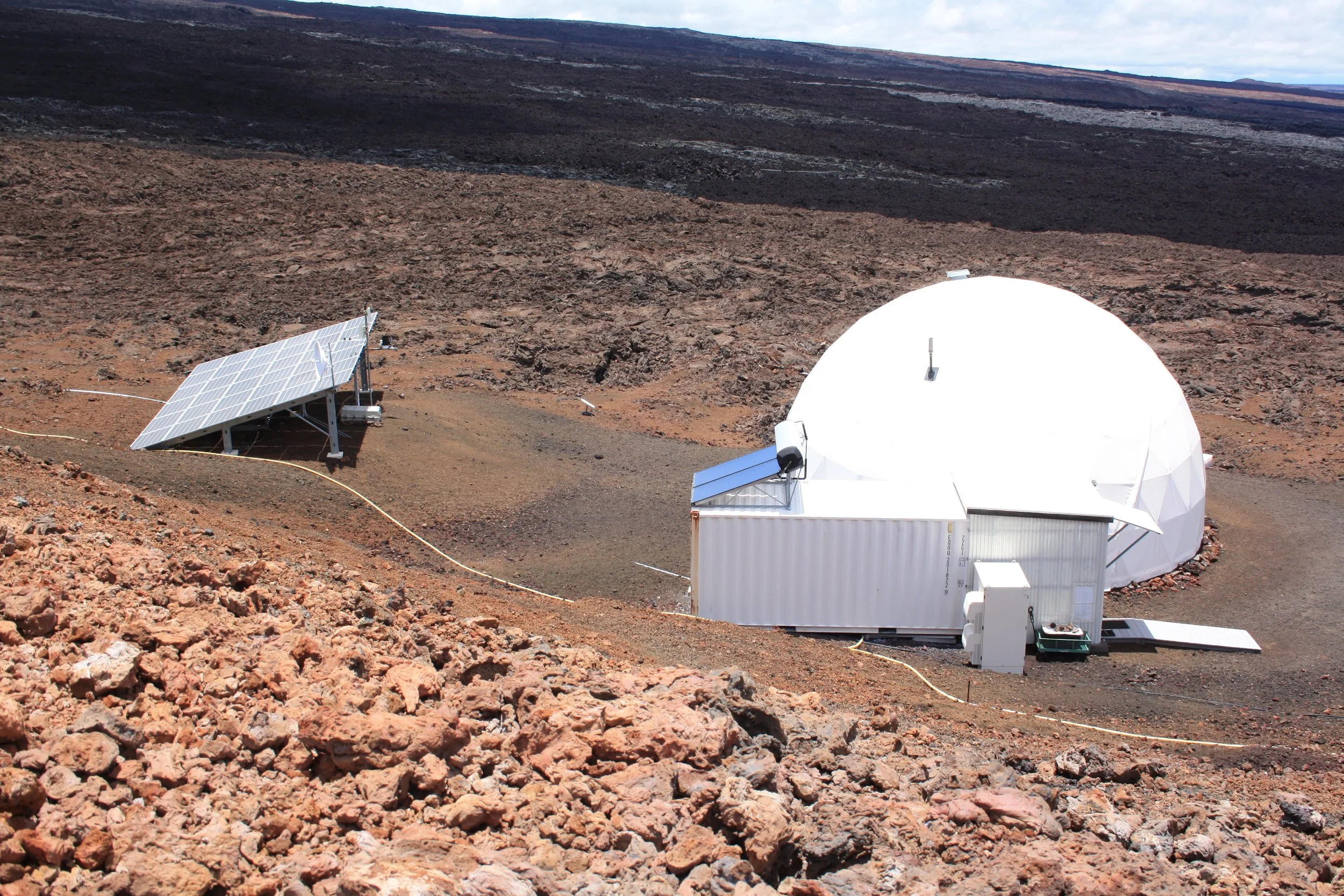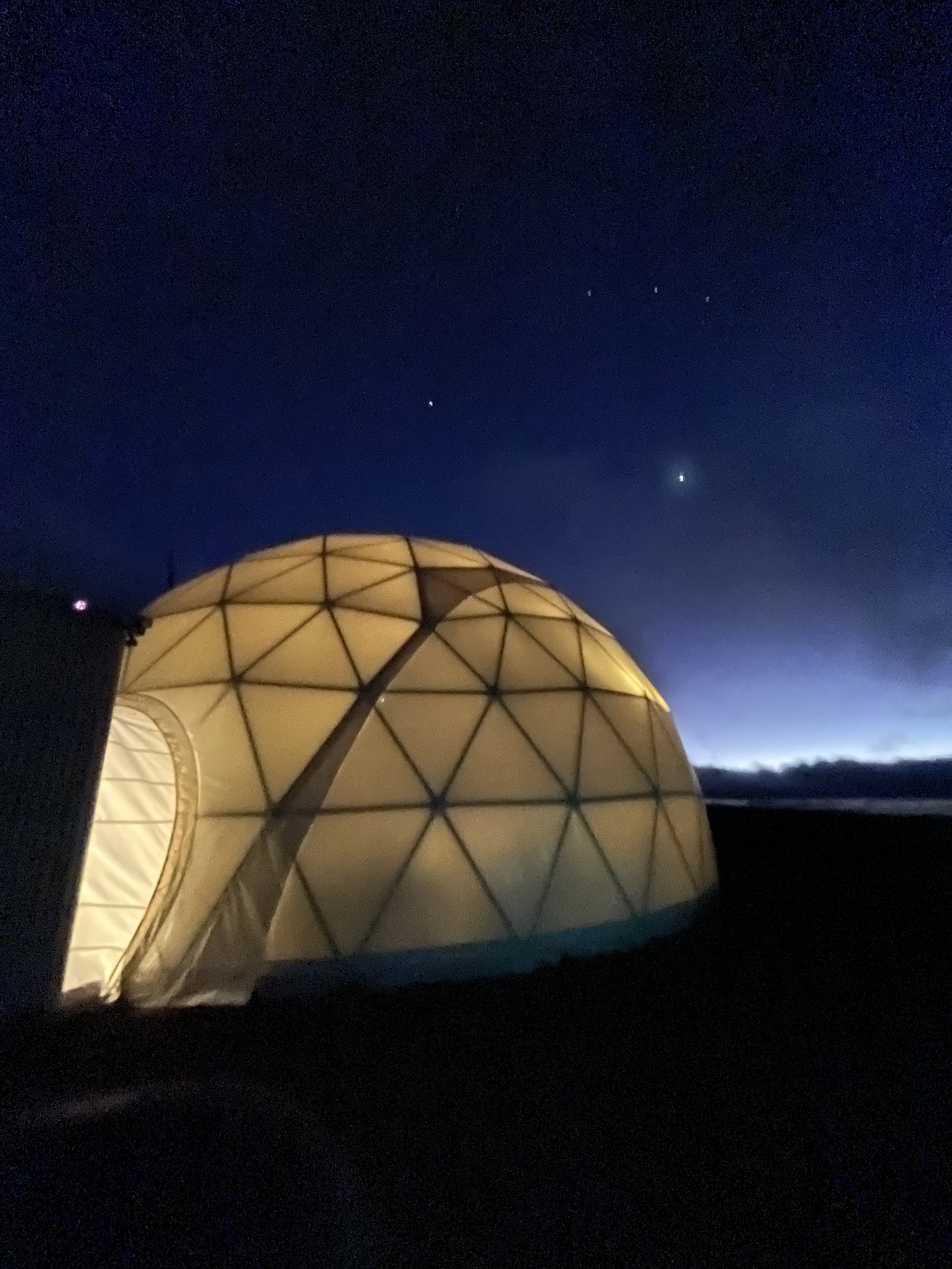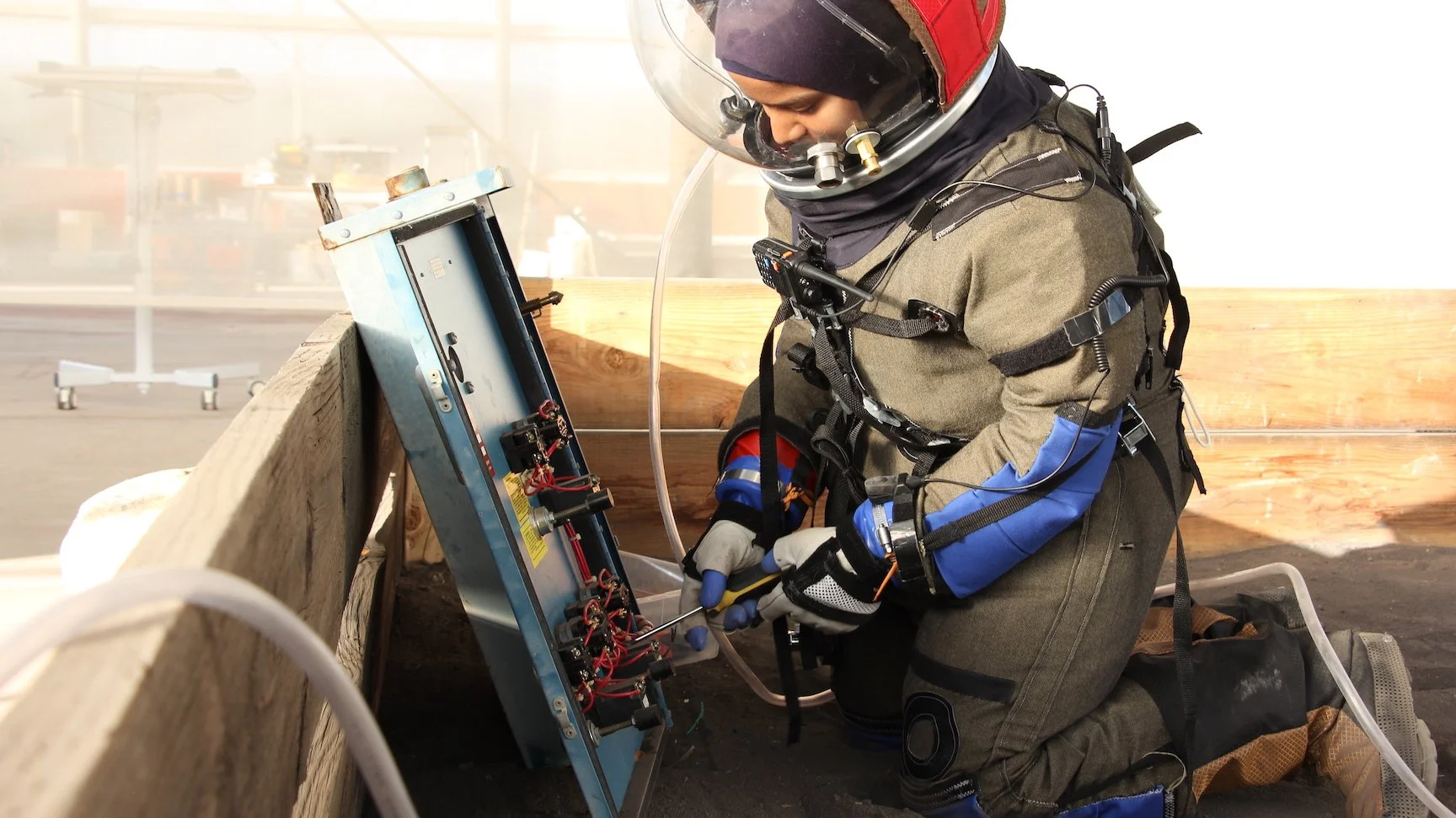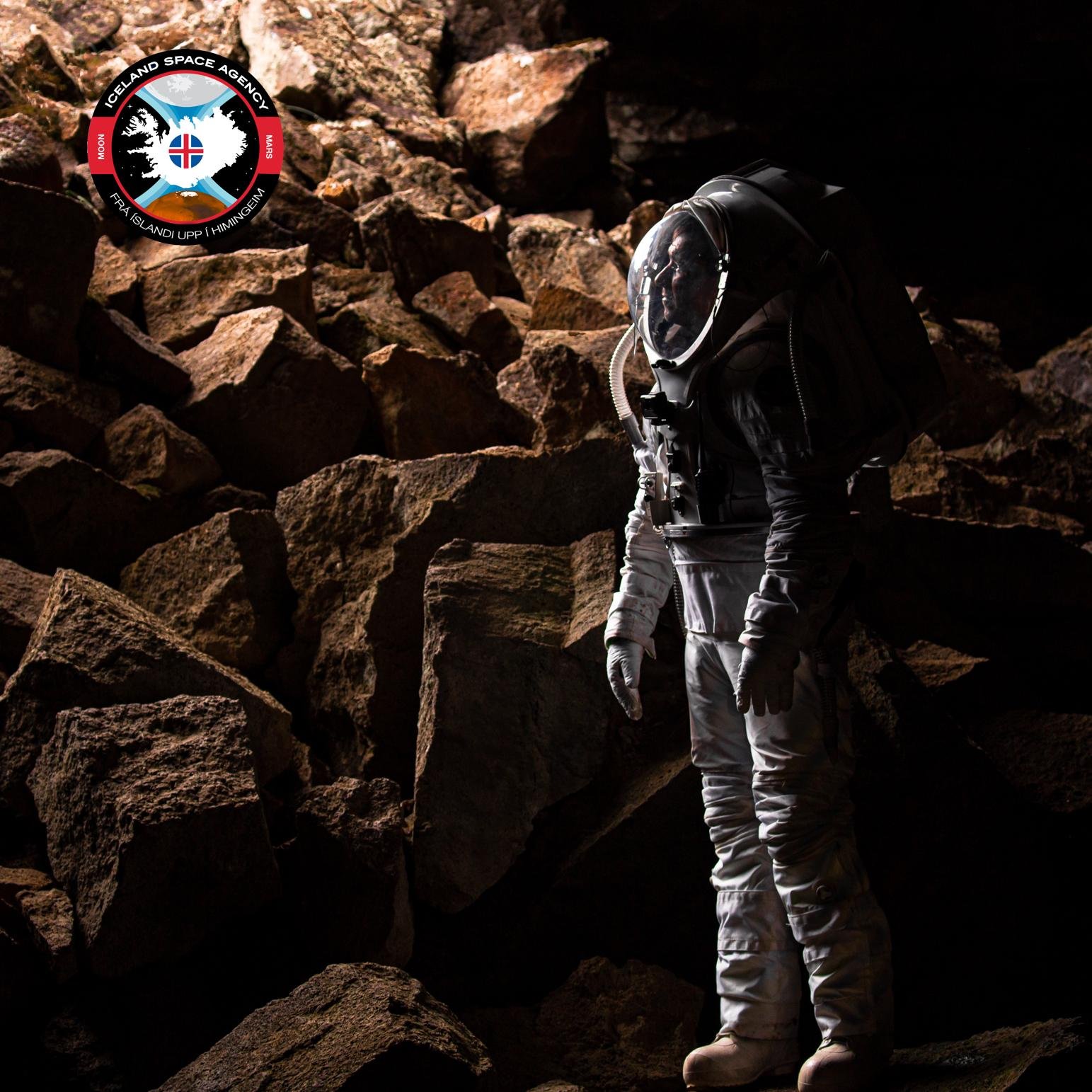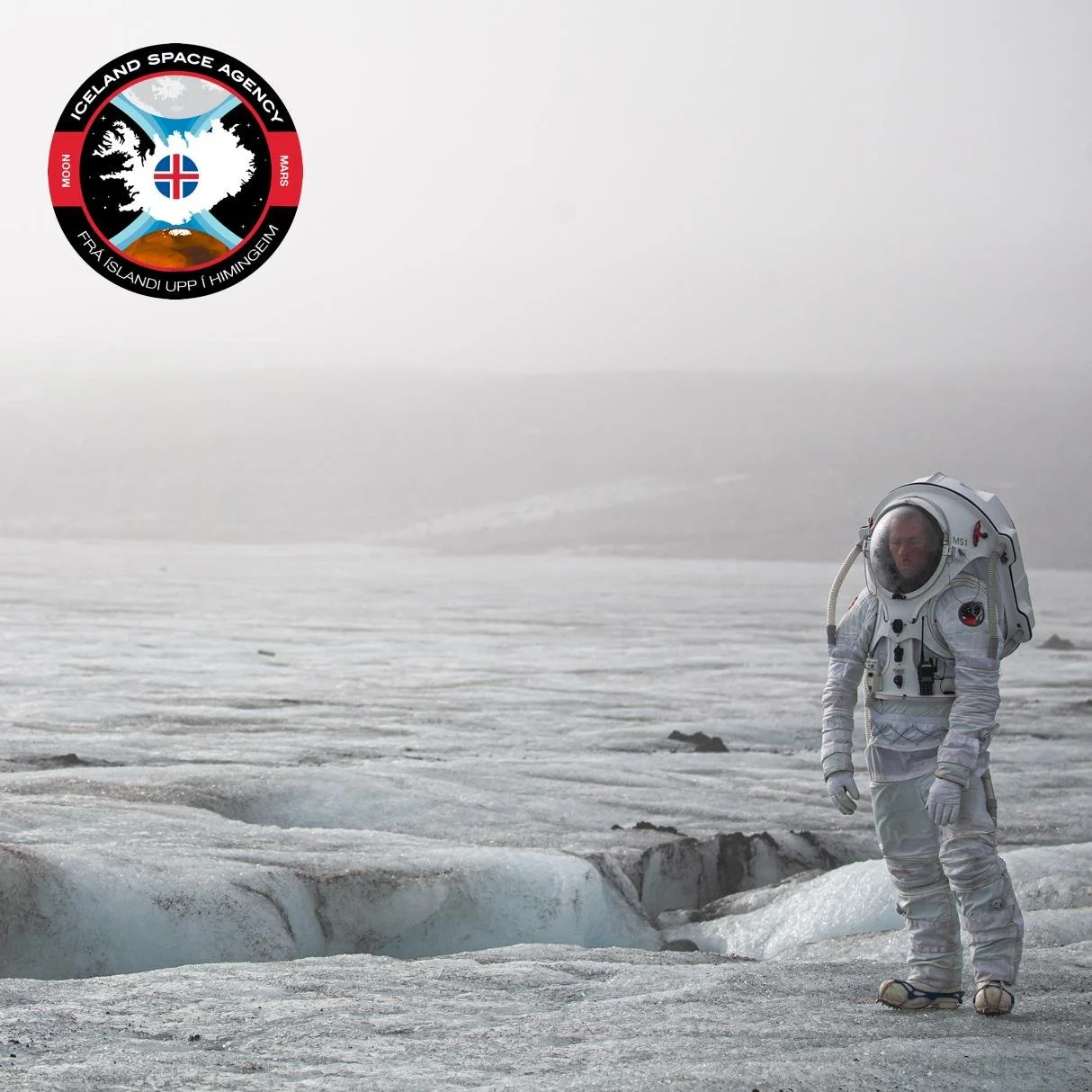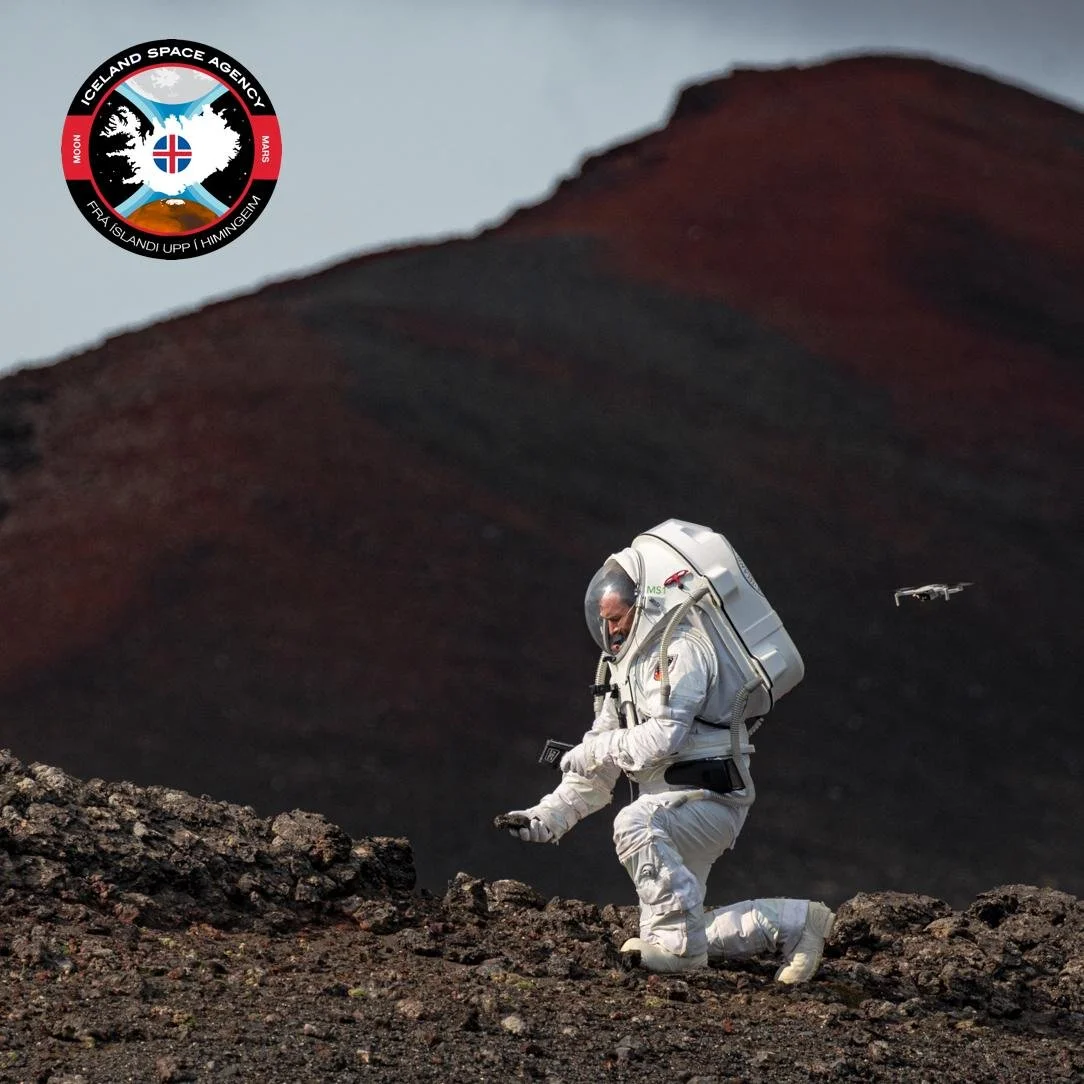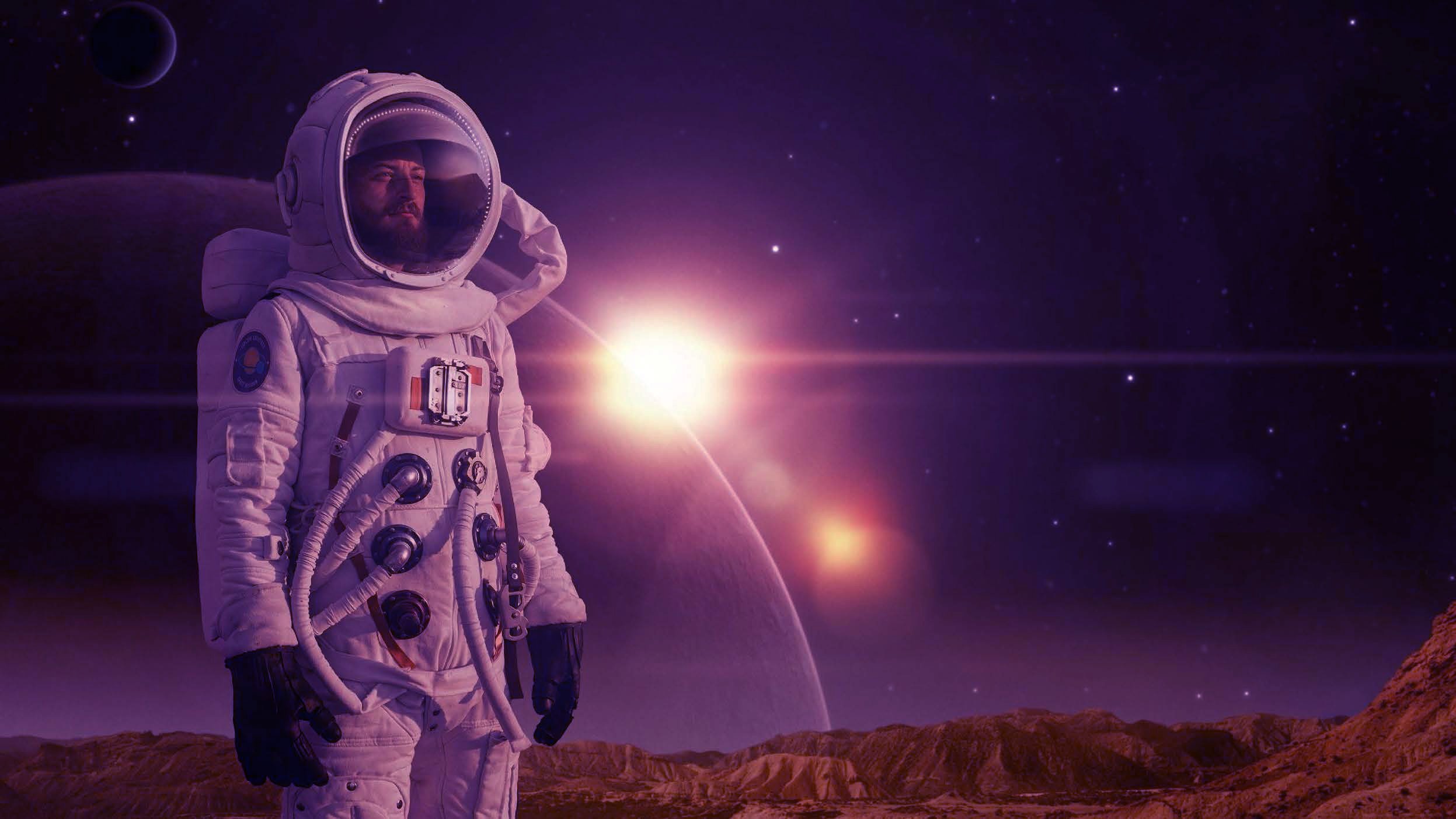
Oct 13th - 26th 2025,
We carried out the largest proof of concept Space simulation mission of its kind:
1 mission, multiple habitats, collaborative research.
To answer the question, “how will we live and work in Space as a community?”
What is an Analog?
Preparing for Space by simulating missions on Earth. Analogous (comparable) to a real space mission.
WBA was organised and launched by a team of volunteers. Many came and went. Below are those that lead the coordination of the mission:
Mission Control Vienna (MICO-VIE) Austrian Space Forum centrally co-ordinated the 2 week WBA mission lead by Dr. Gernot Groemer
Participating Habitats who each ran a mission for WBA: Advanced and Independent.
Education Programs:
The ACE Program - Domina Stamas (2025)
Cosmic Region Simulated Space Station - Dr. Michaela Musilová (2025)
Our Partners
The opportunity to integrate the International Guidelines and Standards for Space Analogs during the WBA was made possible through the generous support of J. Trent Adams.
Early Supporters
•
C. Shelby Lane
•
Jenni Hesterman
•
Frida Caballero
•
Brenda Trinidad
•
Don Balanzat
•
Hasret Balcioglu
•
Margaretta Rose
•
Dennis Trevino
•
Richard Behana
•
Anas Tellat
•
Cristina Star
•
Marwa AlShehhi
•
Katlynn Vicuña
•
James Burk
•
Dirk Raiser
•
Deepa Bangaru-Raju
•
Rich Meyer
•
Toni Butler
•
Matthew Devlen
•
Fiona Smith
•
Andreea Radulescu
•
Riccardo Lazzari
•
Gary Taylor
•
Bhumika Nautiyal
•
Adrian Eilingsfeld
•
Ben McNutt
•
Arthur Smith
•
Amanda Pekin
•
Cassandra Marion
•
Alires Almon
•
Gabrielle M Caswell
•
James Ehrhart
•
Jennifer Pint
•
Richelle Ellis
•
Don Weidner
•
Marufa Akhter Bhuiyan
•
Jess Caleb
•
Thorsten Eschweiler
•
Lucas Alderette
•
Andrew Purkeypile
•
Amanda Knutson
•
Dr Gabrielle Caswell
•
Shriya Musuku
•
Anay Ashwin
•
Ariel Denbow
•
Christopher Shane Sweet
•
Robert L Cunningham
•
Karim J Nahabet
•
Renana Bruckstein
•
Maria Santaguida
•
Dan Novy
• C. Shelby Lane • Jenni Hesterman • Frida Caballero • Brenda Trinidad • Don Balanzat • Hasret Balcioglu • Margaretta Rose • Dennis Trevino • Richard Behana • Anas Tellat • Cristina Star • Marwa AlShehhi • Katlynn Vicuña • James Burk • Dirk Raiser • Deepa Bangaru-Raju • Rich Meyer • Toni Butler • Matthew Devlen • Fiona Smith • Andreea Radulescu • Riccardo Lazzari • Gary Taylor • Bhumika Nautiyal • Adrian Eilingsfeld • Ben McNutt • Arthur Smith • Amanda Pekin • Cassandra Marion • Alires Almon • Gabrielle M Caswell • James Ehrhart • Jennifer Pint • Richelle Ellis • Don Weidner • Marufa Akhter Bhuiyan • Jess Caleb • Thorsten Eschweiler • Lucas Alderette • Andrew Purkeypile • Amanda Knutson • Dr Gabrielle Caswell • Shriya Musuku • Anay Ashwin • Ariel Denbow • Christopher Shane Sweet • Robert L Cunningham • Karim J Nahabet • Renana Bruckstein • Maria Santaguida • Dan Novy
Uniting the World’s Space Analogs
We are supporting and raising awareness for new and existing analogs globally.
We are creating a global education program that aims to target underserved communities.
We are giving you the opportunity to join us. Support the mission today and be part of something really unique.
Supporter perks
As a supporter you will get a limited edition collectable patch and signed certificate. There are only 100 of these early supporter patches and they will NOT be available for purchase. Only supporters who donate to the mission will receive the patch. The patch was designed by Jas Purewal (Director of the World’s Biggest Analog™) and has the WBA logo built into it. Each star represents the advanced group of habitats/missions partnering and participating in WBA.
The first proof of concept mission was 2 weeks long in October 2025.
The World’s Biggest Analog (WBA) is an international collaboration of researchers, educators and entrepreneurs embarking on a unique and historical mission… to unite the world’s analogs through a single mission coordinated around the globe.
The World’s Biggest Analog has officially begun!
16 analog Moon/Mars habitats across 4 continents — in the largest synchronized analog mission ever attempted. Connected by MICO-VIE.
MICO Vienna
History is in motion.
200 scientists from 25 countries come together for this unique mission.
Day 2
Tuesday, October 14, 2025
The World’s Biggest Analog received an inspiring message from the United Nations Office for Outer Space Affairs (UNOOSA). UNOOSA Director Aarti Holla-Maini shared a special video wishing us good luck: “You are showing the world, especially young people, what humanity can truly achieve when we dream big and work together.” Watch the video here (c) UNOOSA
Day 3
Wednesday, October 15, 2025
Greetings from the Nivalis crew at LunAres station in Poland! The crew is excited for their two-week mission “on the Moon” as part of the World’s Biggest Analog. LunAres Research Station is a globally recognized analog habitat with a unique design that simulates a lunar base. The crew will operate entirely within an enclosed, artificial EVA environment while adapting to rigorous schedules and controlled conditions. (c) Cassandra Klos
Day 4
Thursday, October 16, 2025
Welcome to Mars! The Jordan Space Research Initiative (JSRI) is hosting PETRA-2 under the World’s Biggest Analog, advancing psychological, environmental, and technological research while inspiring Jordanians to engage in space science for a sustainable future. Located in the red desert of Wadi Rum, its unique environment provides the perfect analog to simulate working and living in Mars-like habitats.
Visible tour of the habitat
Day 5
Friday, October 17, 2025
Australia’s first analog space mission is part of the World’s Biggest Analog! The University of Adelaide and ICEE Space have teamed up for the ADAMA mission in Adelaide. This special habitat simulates conditions on the Moon, including the unique lighting experienced during the course of a lunar day.
The ADAMA crew will be completely isolated in the habitat for 14 days, connected to Earth only via comms and their secured data cloud. This incredible mission will contribute to our understanding of how the novel physical environment of space affects astronauts’ mental and cognitive well-being. (c) University of Adelaide / ICEE Space
Day 6
Saturday, October 18, 2025
Today at the Mission Control Center in Vienna, we had a special drop-in from the Hydronaut Habitat Director, and a live EarthComs chat with their crew of three.
We were also able to bring in our Human Factors Lead to check in directly with the crew. Even a short conversation like this can make a world of difference in boosting morale for the crew in isolation. Inside a habitat with just 10 m³ of livable space, the team has mastered the art of minimalism. We asked them what they’re most looking forward to and their answers were unanimous: Open space and real mattresses! (c) OeWF
Day 7
Sunday, October 19, 2025
Crew 319 at the Mars Desert Research Station in Utah is carrying out an exciting mission as part of the World’s Biggest Analog. The crew's work includes analyzing rock and soil samples in the science lab, observing sunspots with their solar observatory, and running a microgreens experiment comparing vermiculite and paper towel bases for growing broccoli, radish, and mung bean.
The unique advantage of this habitat lies in its surrounding landscape, a true geologic Mars analog that offers opportunities for rigorous field studies under conditions similar to those of an actual space mission.
Day 8
Monday, October 20, 2025
Behind every successful analog mission is a team keeping an eye on the skies. Here at MICO-Vienna, our meteorology team sends daily weather reports to all 16 habitats across the mission network.
By tracking winds and extreme temperatures, they ensure that every EVA (extravehicular activity) and experiment is planned under the safest and most realistic conditions, mirroring the precision needed for real space missions. And by using real data from NASA’s Perseverance rover, they give our astronauts realistic Martian weather patterns on Earth, bringing a touch of the Red Planet into our daily operations (c) Caio Kauffmann / OeWF
Day 9
Tuessday, October 21, 2025
PETRA-2 is back on Earth! After seven days in isolation, the crew stepped out of their habitat to a warm welcome from their children in Wadi Rum. Their excitement and curiosity were a powerful reminder of why missions like this matter. ❤️
As part of the World’s Biggest Analog, PETRA-2 was the second Jordanian space analog mission and a historic mission in many ways, bringing together an all-Arab female crew representing Jordan and Palestine. (c) Jordan Space Research Initiative
Day 10
Wednesday, October 22, 2025
Across the World’s Biggest Analog, 16 habitats are busy with a range of scientific experiments. Some are performed by all habitats simultaneously, simulating the kind of international collaboration that would be essential for future space missions, while others are unique projects specific to each team.
At Habitat Monsaraz Mars Analog Station, analog astronauts are carrying out the COMPASS experiment, exploring how edible plants like quinoa and spinach can grow in Mars-like soils such as serpentinite and smectite. Their work sheds light on the challenges of extraterrestrial agriculture and how we might one day farm on Mars (c) ASP-1 Novares – Habitat Monsaraz Mars Analog Station
Day 11
Thursday, October 23, 2025
While many of the World’s Biggest Analog’s experiments are focused on science and technology that could one day take us to Mars or the Moon, one of the most crucial aspects of every mission is crew dynamics. We study how crews live and work together in isolated, confined, and extreme environments – and what helps maintain teamwork, communication, and mental well-being. After all, no mission can succeed without a healthy and cohesive crew.
In today’s Picture of the Day, you can see the crew of Habitat Marte sharing breakfast. More than just a meal, it’s a moment of connection that strengthens trust, morale, and the bonds that keep analog astronauts thriving throughout the mission. (c) Lucas Alderette
Day 12
Friday, October 24, 2025
Today’s Picture of the Day shows MICO-VIE during their daily “Pool Party.” Despite the name, it’s less about swimming and more about coordination: an evening debrief where the day’s events are discussed, potential tasks for the next day are planned, and all teams share important updates. Our Director of Operations leads the session, ensuring everyone stays informed and prepared for what’s ahead.
Even without an actual pool, the atmosphere is always great as we keep working toward one goal: advancing human missions to the Moon and Mars. (c) Oewf/Oliver Lannerskoog
Day 13
Saturday, October 25, 2025
What would it be like to live alone on Mars?
At Habitat SAM in Arizona, Analog Astronaut Matthias Beach is currently spending two weeks in full isolation as part of the World’s Biggest Analog. SAM – the Space Analog for the Moon and Mars – is a sealed, pressurized research habitat built around the historic Biosphere 2 Test Module. It’s one of the most realistic Mars simulation environments on Earth, with a life-support system that regulates oxygen, CO₂, humidity, and pressure.
During the mission, a bioregenerative experiment focuses on developing plant-based life support systems for future Moon and Mars habitats. The goal: determine how crops can help offset the CO₂ produced by crew members, paving the way towards self-sustaining extraterrestrial living. (c) SAM Mars Analog
Day 14
Sunday, October 26, 2025
The last day of the mission has come, and what an incredible journey it has been!
We want to extend a huge thank you to all the habitats and each and everyone involved in WBA for their incredible work and collaboration.
This mission has been a true testament to teamwork, innovation, and the essence of exploration. We look forward to building on this success and continuing to push the boundaries of what is possible in analog missions in the future.











